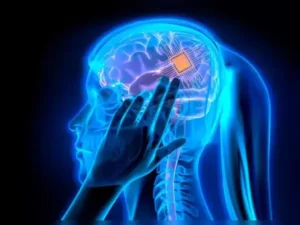Elon Musk’s Neuralink has cracked the brain-computer barrier, implanting its tech in the first human! This tiny chip promises mind-controlled devices, restored movement for paralyzed individuals, and maybe even telepathy. But how does it work? Thin threads read brain signals, like thoughts and actions, transmitting them to external devices. While the first patient regained some arm movement, ethical questions loom. Privacy, brain hacking, and “enhanced” discrimination are concerns demanding careful navigation. Neuralink’s potential is vast, but so are the challenges. This is humanity’s first tentative step into a mind-bending future, one where our thoughts have the power to change the world. Will we use it wisely? Only time will tell.
Introduction: Neuralink
Elon Musk has done it again! He’s opened the door to a new era with the successful implantation of Neuralink’s brain chip in the first human patient. This groundbreaking technology aims to bridge the gap between mind and machine, unlocking possibilities long relegated to science fiction. But how does it work? And what does this mean for the future?
What is Neuralink?
Neuralink is a neurotechnology company founded by Musk in 2016, aiming to create a seamless brain-computer interface (BCI). This brain chip, called the “Link,” directly reads and transmits neural signals, enabling communication and control via thoughts alone.
The Promise of Neuralink:
The potential of Neuralink is vast. It could offer:
- Restoration of motor functions: For those with paralysis, it could empower them to move limbs, manipulate objects, and regain independence.
- Enhanced communication: Imagine composing texts, controlling devices, or even sharing thoughts directly with others, all through brainpower.
- Treatment of neurological disorders: Neuralink might hold the key to treating or managing conditions like Parkinson’s disease, epilepsy, and even depression.
- A symbiotic relationship with AI: In the future, Neuralink could pave the way for a deeper integration with artificial intelligence, potentially augmenting human cognitive abilities.

How Does Neuralink Work?
The “Link” implant, roughly the size of five stacked coins, is surgically placed in the brain. Thin, flexible threads with thousands of electrodes record the firing of neurons, translating brain activity into digital signals. These signals are then processed by an external device and translated into commands for computers or external devices.
The First Human Implant and Beyond:
The recent human implant, a quadriplegic man regaining some arm movement, marks a significant milestone. While initial applications will focus on restoring motor functions, the future holds immense possibilities.
The first human implant is still in its early stages, and long-term safety concerns remain. Extensive research and ethical considerations are crucial before widespread adoption.
Issues like privacy, brain hacking, and potential discrimination based on brain enhancements demand careful consideration and robust regulations.
While the technology is advancing rapidly, widespread availability is likely years away. Further research, regulatory approvals, and cost considerations will play a significant role.
Conclusion:
Elon Musk’s Neuralink represents a giant leap towards a future where brain and technology merge. While challenges and ethical considerations abound, the potential to improve lives and redefine human capabilities is undeniable. As Neuralink continues to evolve, we stand at the precipice of a new era, one where the power of thought, unconstrained by physical limitations, could finally be unleashed.
